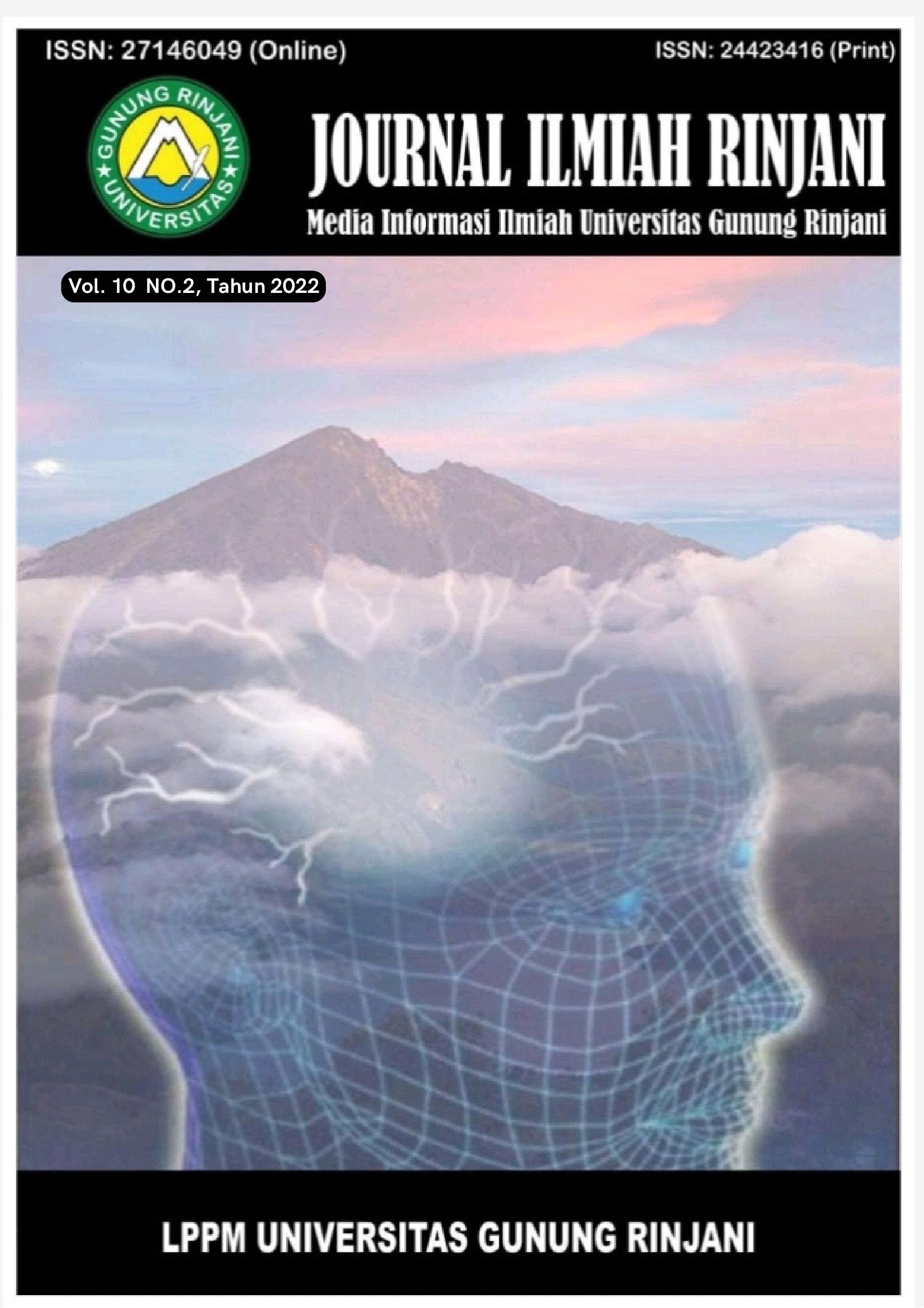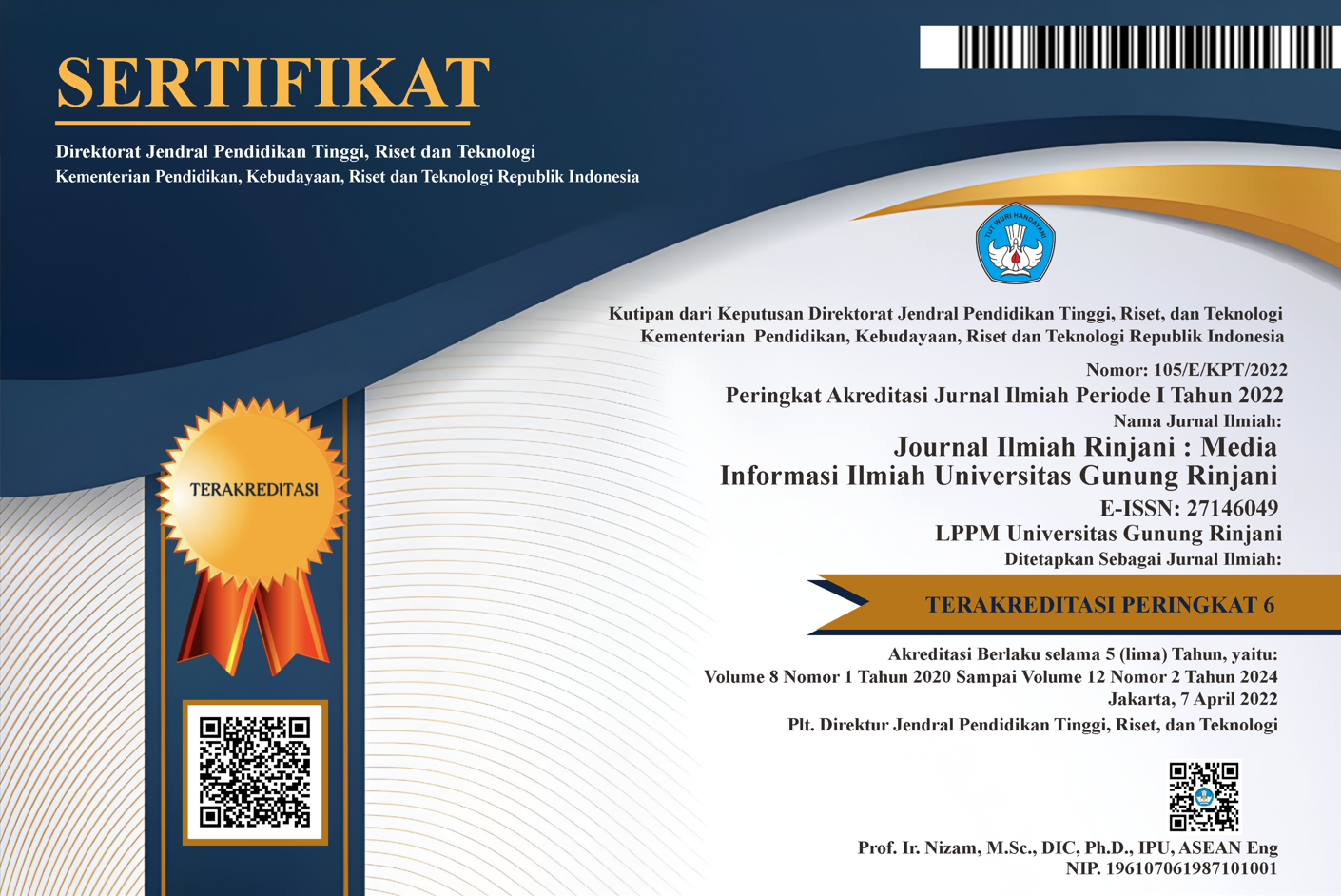ECONOMIC EFFICIENCY OF PORANG FARMING IN EAST LOMBOK REGENCY
Keywords:
economic; efficiency; production; porangAbstract
Porang (Amorphophallus muelleri B) or known as elephant yam is one of the leading agricultural commodities which has economic potential. This potential is shown by its export value over the last few years. The increase in planting area and its institutional board is a strategy to boost production yields. The production volume has not reached the requirement because currently is still a small-scale business model and an introduction plant to commercial farming. East Lombok Regency has the opportunity to be a strategic region for pouring farming development due to its agro-climatic characteristics that met its growing conditions. This study aims to analyze the economic efficiency of porang farming in the East Lombok Regency. The research locations were determined purposively in Sembalun District, Masbagik District, and Pringgasela District. The data we're collecting through census involved 15 members of porang farmers. The data was estimated using the Maximum Likelihood Estimation (MLE) frontier 4.1c program. The results showed that the production factors that significantly affected the increase in economic value were seeds, SP-36 fertilizer, organic fertilizers, and pesticides. The estimation of economic efficiency of porang farming economically had efficient. This is indicated by the value of the average economic efficiency of porang farmers 0.9111.
Abstrak
Tanaman porang sebagai salah satu komoditas pertanian unggulan bernilai ekonomis. Potensi tersebut ditunjukkan dengan permintaan ekspor Indonesia cukup baik selama beberapa tahun terakhir. Peningkatan luas areal tanam dan kelembagaan merupakan kebijakan untuk meningkatkan hasil produksi. Volume produksi belum mencapai target kebutuhan disebabkan skala usaha masih gurem dan porang menjadi introduksi usahatani komersil. Kabupaten Lombok Timur merupakan salah satu daerah yang berpeluang strategis didalam pengembangan usahatani porang dengan karakteristik agroklimat yang sesuai syarat tumbuh. Penelitian bertujuan untuk menganalisis efisisensi ekonomi usahatani porang di Kabupaten Lombok Timur. Lokasi penelitian ditentukan secara purposive di Kecamatan Sembalun, Kecamatan Masbagik, dan Kecamatan Pringgasela. Pengumpulan data secara sensus melibatkan seluruh anggota petani porang berjumlah 15 petani. Data diestimasi menggunakan Maximum Likelihood Estimation (MLE) program frontier 4.1c. Hasil penelitian menunjukkan bahwa faktor produksi yang berpengaruh nyata terhadap peningkatan nilai ekonomis adalah benih, pupuk SP-36, pupuk organik dan pestisida. Hasil estimasi efisiensi ekonomi usahatani porang telah efisien secara ekonomi. Hal tersebut ditunjukkan dengan nilai rata-rata efisiensi ekonomi petani porang 0,9111.
Kata kunci: efisiensi ekonomi, faktor produksi, porang
Downloads
References
Alifianto, F., Azrianingsih, R., & Rahardi, B. (2013). Peta persebaran porang (Amorphophallus muelleri Blume) berdasarkan topografi wilayah di Malang raya. Jurnal Biotropika, 1(2), 75–79. http://biotropika.ub.ac.id/index.php/biotropika/article/view/136/118
Coelli, T. J., Prasada Rao, D. S., O’Donnell, C. J., & Battese, G. E. (2005). An introduction to efficiency and productivity analysis. In An Introduction to Efficiency and Productivity Analysis. https://doi.org/10.1007/b136381
Farrell, M. J. (1957). The Measurement of Productive Efficiency http://www.jstor.org/stab. Journal of the Royal Statistical Society. Series A (General), 120(3), 253–290. http://goo.gl/AFhm2N
Jakiyah, U., & Nurhidayah, S. (2019). Efisiensi Ekonomis Usahatani Padi Organik Di Kabupaten Tasikmalaya. Jurnal Hexagro, 3(1), 41–50. https://doi.org/https://doi.org/10.36423/hexagro.v3i1.307
Jondrow, J., Knox Lovell, C. A., Materov, I. S., & Schmidt, P. (1982). On the estimation of technical inefficiency in the stochastic frontier production function model. Journal of Econometrics, 19(2–3), 233–238. https://doi.org/10.1016/0304-4076(82)90004-5
Miller, T. A., Doll, J. P., & Orazem, F. (1985). Production Economics, Theory with Applications. American Journal of Agricultural Economics, 158–159. https://doi.org/10.2307/1240848
Suharyanto, S. (2015). Efisiensi Ekonomi Relatif Usahatani Padi Sawah Dengan Pendekatan Fungsi Keuntungan Pada Program Sekolah Lapang-Pengelolaan Tanaman Terpadu (Sl-Ptt) Di Provinsi Bali. Informatika Pertanian, 24(1), 59. https://doi.org/10.21082/ip.v24n1.2015.p59-66
Sukartono, Suwardji, Kusumo, B. H., Bakti, A. A., & Edwin. (2020). Penguatan kapasitas kelompok tani dalam budidaya porang berbasis pertanian konservasi-agroforestry di Desa Sambi Elen, Lombok Utara. Jurnal Siar Ilmuwan Tani, 1(2), 67–74.
Yasin, I., Suwardji, Kusnarta, Bustan, & Fahrudin. (2021). Menggali Potensi Porang Sebagai Tanaman Budidaya di Lahan Hutan Kemasyarakatan di Pulau Lombok. Prosiding SAINTEK, 3(622), 453–463.












